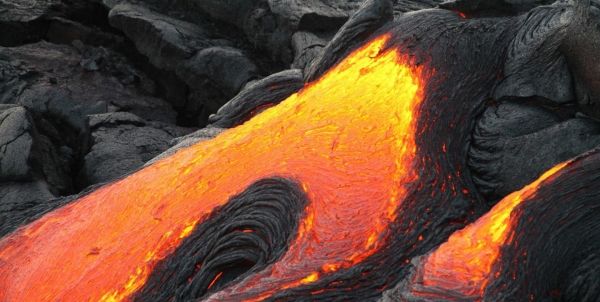International research led by geologists from Curtin University has found that a volcanic province in the Indian Ocean was the world’s most continuously active — erupting for 30 million years — fuelled by a constantly moving ‘conveyor belt’ of magma.
It’s believed this magma ‘conveyor belt,’ created by shifts in the seabed, continuously made space available for the molten rock to flow for millions of years, beginning around 120 million years ago.
Research lead Qiang Jiang, a PhD candidate from Curtin’s School of Earth and Planetary Sciences, said the studied volcanoes were in the Kerguelen Plateau, located in the Indian Ocean, about 3,000 kilometres south west of Fremantle, Western Australia.
“Extremely large accumulations of volcanic rocks — known as large volcanic provinces — are very interesting to scientists due to their links with mass extinctions, rapid climatic disturbances, and ore deposit formation,” Mr Jiang said.
Read more at Institute of Curtin University
Image: Lava flowing across black rocks (Credit: Pixabay)


